Contents
- 1 What is an inline fan and how does it work?
- 2 15 Best Inline Fans For Your Grow Space
- 3 FAQs
- 3.1 Why do you need an inline fan for your grow space?
- 3.2 How to set up an inline fan without the ducting?
- 3.3 How to install an inline fan using ducting?
- 3.4 Do I need a carbon filter for my inline duct fan setup?
- 3.5 How to install a carbon filter with an inline duct fan?
- 3.6 How to calculate the size of the inline fan you need?
What is an inline fan and how does it work?
Inline fans help to remove the heat and moisture from the grow rooms and tents. It pulls damp air from the grow space and sends it outside before it condenses that causes mold.
15 Best Inline Fans For Your Grow Space
Below we will review the top ten best inline fans available on the market. We made this list in our personal preference and sorted it based on the manufacturers’ prices, quality, durability, and reputation.
AC Infinity CLOUDLINE Inline Fans
Review
AC Infinity takes the title of the flagship for inline duct fan system with their CLOUDLINE series lineup. The fans are well built, the customer service team is fantastic, and the fans look amazing when you mount them on your wall or hang them in your tent.
The new CLOUDLINE series contains a cutting-edge Electronically Commutated (EC) motor, controlled using precise electronic pulses and intelligent programming. As a result, the inline fan operates reasonably quieter and reaches low speeds without producing heat or noise. The EC motor is twice as energy-efficient, which saves up to 40% in energy costs, paying for itself over time.
Its mixed-flow design allows the fans to maintain peak performance in high static pressure environments.
The fans come with a complete kit that includes the inline fan unit, controller, user manual, and everything needed to mount the fan and power it through an outlet.
The S-series and the T-series fans are actually the same. The only difference is the controller. The S-series features a one-button controller that allows you only to choose the fan speed. The T-series boasts an intelligent controller with precise temperature and humidity sensors, timer, fan speed control, and alarm system functions. The same controller can connect CLOUDLINE fans of different sizes and series to share the same programming. For example, you can connect an exhausting CLOUDLINE T6 with a filter that can share the same controller as an intaking CLOUDLINE S4 to balance static pressure.
AC Infinity COULDLINE fans are the best inline fans for a small grow tent on Amazon.
Pros:
- Super quiet
- Moves a lot of air
- Energy-efficient
- Programmable controller
- Easy to set up
- Plug and play
Cons:
- Gets noisier on higher speed levels
- Expensive
AC Infinity CLOUDLINE T4, Quiet 4-Inch Inline Duct Fan
Specifications
| Fan Speed | 2800 RPM |
| Airflow | 205 CFM |
| Power Usage | 21 W |
| Noise Level | 28 dB |
| Weight | 5.94 pounds |
| Duct Size | 4” |
| Dimension | 6.9 x 11.9 x 7.4 inches |
AC Infinity CLOUDLINE T6, Quiet 6-Inch Inline Duct Fan
Specifications
| Fan Speed | 2800 RPM |
| Airflow | 402 CFM |
| Power Usage | 21 W |
| Noise Level | 38 dB |
| Weight | 7.17 pounds |
| Duct Size | 6” |
| Dimension | 7.9 x 12.6 x 8.4 inches |
AC Infinity RAXIAL Inline Booster Fans
Review
The RAXIAL series is a line of versatile inline fan boosters designed to increase airflow and ventilate your grow space.
Each fan has an easy-to-use knob controller to adjust fan speed for your specific airflow boosting needs.
Its unibody framework helps to reduce vibration and ensures smooth and low-resistant airflow. The steel cylinder is fluted and ridged, making it easy to install it in-between ducting.
Its balanced steel blades have a lifespan of 67,000 hours. The blades are equipped with permanent lubricated double ball bearings, so they don’t require regular maintenance.
You can also mount this fan both horizontally or vertically.
The kit includes:
- One AC-powered inline booster duct fan.
- A speed controller.
- A power plug.
- Mounting screws.
- A cable management set.
The inline variable speed controller allows you to control the fan’s speed and turn it on or off.
It’s a nice little fan and works well for what it is.
Pros:
- Premium solid steel body
- Very quiet
- Comes with a retainer to prevent debris and moisture
- Low maintenance
- Long lifespan of 67,000 hours
Cons:
- The motor is not so powerful
- Short controller cable
AC Infinity RAXIAL S4, Inline Booster Duct Booster Fan 4-Inch
Specifications
| Fan Speed | 2930 RPM |
| Airflow | 106 CFM |
| Power Usage | 15 W |
| Noise Level | 28 dB |
| Weight | 1.85 pounds |
| Duct Size | 4” |
| Dimension | 7.28 x 3.95 x 3.95 inches |
AC Infinity RAXIAL S8, Inline Booster Duct Booster Fan 8-Inch
Specifications
| Fan Speed | 2450 RPM |
| Airflow | 428 CFM |
| Power Usage | 46 W |
| Noise Level | 43 dB |
| Weight | 4.12 pounds |
| Duct Size | 8” |
| Dimension | 7.28 x 7.87 x 7.87 inches |
iPower Inline Fans
Review
iPower is one of the leading manufacturers of grow light systems, and they also produce a range of hi-tech inline fans that provide powerful airflow with a quiet operation.
It moves more air and can resist atmospheric corrosion from humidity than most other fans anywhere close in this price range.
Tight and precise construction reduces wear and tear, gives the fan a long life.
The bearings are permanently lubricated that require zero maintenance.
You can install the fan anywhere in minutes. Its fluted ends allow you to attach it to the ducting easily.
iPower Grow Tent Ventilation Combo comes with:
- Inline Fan Blower
- Australia Charcoal Filter
- Uninsulated Aluminum Ducting + 2 Stainless Clamps
- One control switch for three settings
Pros:
- Moves air efficiently
- Durable ceramic-coated can
- Easy to install
- Value for money
Cons:
- Noisier than other fans
- The design is not so modern
iPower 6 Inch 442 CFM Inline Fan
Specifications
| Fan Speed | 2380 RPM |
| Airflow | 442 CFM |
| Power Usage | 95 W |
| Noise Level | 50dB |
| Weight | 10.6 pounds |
| Duct Size | 6” |
| Dimension | 16.5 x 14.5 x 12.2 inches |
iPower 8 Inch 750 CFM Inline Fan
Specifications
| Fan Speed | 2600 RPM |
| Airflow | 750 CFM |
| Power Usage | 137 W |
| Noise Level | 55 dB |
| Weight | 13.7 pounds |
| Duct Size | 8” |
| Dimension | 15 x 10.5 x 13.5 inches |
iPower 8 Inch 550 CFM Inline Fan
Specifications
| Fan Speed | 2250 RPM |
| Airflow | 550 CFM |
| Power Usage | 137 W |
| Noise Level | 55 dB |
| Weight | 13.7 pounds |
| Duct Size | 8” |
| Dimension | 13 x 10 x 10 Inches |
VIVOSUN Inline Fans
Review
VIVOSUN inline fans are great for setting up inline air circulation systems for small to medium grow tents. You can use it as an intake fan to bring fresh air into your grow room or use it as an exhaust fan in smaller setups.
Perfect for entry-level indoor growers.
Although the fan does a great job of reducing the humidity in the tent, you may want to consider adding a small dehumidifier if you live in a high humidity area or country. It will help you tremendously. The included hygrometer is a great help. It is crucial to keep an eye on the humidity in the grow tent for successful plant growth.
It creates negative pressure to exchange gases properly. You can use a standard 4″ dryer ducting to take all the heat and smell right out of the window.
VIVOSUN inline fans are energy-efficient and engineered for maximum boost with minimum noise.
The plastic construction is solid yet lightweight and easy to install.
The adjustable speed knob is excellent, although the cabling could use a few more feet.
The fans come with a unique activated charcoal carbon filter imported from Australia that delivers 100% filtered airflow.
Motors of the fans are fitted with permanently lubricated bearings that require no maintenance.
If you are looking for an affordable, high-quality inline fan, then you must try VIVOSUN.
Pros:
- Affordable
- Low noise
- Easy to install
- Effective ventilation
Cons:
- It has a slight vibration when mounted
VIVOSUN 4 Inch 190 CFM Inline Fan with Speed Controller
VIVOSUN 6 Inch 390 CFM Inline Fan with Speed Controller
Specifications
| Fan Speed | 2550 RPM |
| Airflow | 390 CFM |
| Power Usage | 67 W |
| Noise Level | 37 dB |
| Weight | 6.75 pounds |
| Duct Size | 6” |
| Dimension | 12.4 x 10.1 x 10 inches |
VIVOSUN 8 Inch 720 CFM Inline Fan with Speed Controller
Specifications
| Fan Speed | 2450 RPM |
| Airflow | 720 CFM |
| Power Usage | 190 W |
| Noise Level | 40 dB |
| Weight | 9.5 pounds |
| Duct Size | 8” |
| Dimension | 13.2 x 11.2 x 11 inches |
TerraBloom ECMF Inline Fans
Review
TerraBloom LLC is an American company that manufactures modern, ultra-efficient ventilation solutions for commercial, agricultural, and residential use.
TerraBloom EC inline fans were included in ENERGY STAR Most Efficient list for 2021 for their cutting-edge energy efficiency technological innovation. The fans use a brushless electronically commutated Motor (EC) and dual jet type impeller to deliver strong airflow and consume 40-75% less energy than AC fans. With a built-in computer chip on board, these motors allow precise speed adjustment without energy waste and heat.
TerraBloom EC inline fans are compact and airtight. Their well-built aluminum casing and blades resist accidental damage, harsh elements and require less maintenance. Most major inline fan brands are made from plastic which flexes and creates distorted sound and vibrations.
ECMF inline fans come with a selection of speed controllers. You can choose from a wireless remote, programmable thermostat, 8-speed digital, or granular analog wired speed controllers. You can use the speed controller to adjust fans’ speed from 0%-100% without creating additional hum or background noise.
All ECMF inline fans are ETL listed and in compliance with North American safety standards. So all these fans come with a 2-year warranty.
Pros:
- Powerful EC motor
- Very quiet
- 8 Speed Digital PWM Controller (Optional)
- Energy-efficient
- Well-built aluminum body
Cons:
- Instructions for the digital controller can be hard to follow
TERRABLOOM ECMF-100, 4-Inch Inline Duct Fan with Speed Controller
Specifications
| Fan Speed | 5000 RPM |
| Airflow | 160 CFM |
| Power Usage | 19 W |
| Noise Level | 28 – 56 dB |
| Weight | 3.7 pounds |
| Duct Size | 4” |
| Dimension | 6.25 x 7.25 x 5.9 inches |
TERRABLOOM ECMF-150, 6-Inch Inline Duct Fan with Speed Controller
Specifications
| Fan Speed | 5000 RPM |
| Airflow | 350 CFM |
| Power Usage | 40 W |
| Noise Level | 31 – 60 dB |
| Weight | 4.84 pounds |
| Duct Size | 6” |
| Dimension | 7.25 x 4.9 x 6.95 Inches |
TERRABLOOM ECMF-250, 10-Inch Inline Duct Fan with Digital Controller
Specifications
| Fan Speed | 3200 RPM |
| Airflow | 946 CFM |
| Power Usage | 126 W |
| Noise Level | 45 – 65 dB |
| Weight | 9.95 pounds |
| Duct Size | 10” |
| Dimension | 12.13 x 7.87 x 8.94 Inches |
TOPHORT Inline Fans
Review
TOPHORT inline fans use a Powerful blower fan to move air through your target location for optimal ventilation efficiently.
Its durable plastic fan housing and blades keep the noise low.
TOPHORT inline fans come with a variable speed controller that makes it easy to adjust the fan speed.
With its removable duct ends with locking tabs, it’s easy to remove for maintenance.
The motor features a permanently lubricated bearing that operates quietly and requires no maintenance.
TOPHORT inline fans are suitable for industrial and household use. You can use it as an intake fan to bring fresh air into your grow room. It also works excellent as an exhaust fan in smaller setups with LEDs or Lights under 600W.
The fans are powerful enough to extract odors from your grow tents and pull air through carbon filters. When using this fan with a carbon filter, attach the fan as close to the filter as possible.
Pros:
- Energy-efficient
- Quiet operation
- Lightweight
- Super easy to install
- No maintenance required
Cons:
- The motor is not so powerful
TOPHORT 4 Inch Inline Duct Fan 190 CFM Blower Fan
Specifications
| Fan Speed | 2500 RPM |
| Airflow | 190 CFM |
| Power Usage | 60 W |
| Noise Level | 32 dB |
| Weight | 5.05 pounds |
| Duct Size | 4” |
| Dimension | 12.3 x 9.2 x 9 inches |
TOPHORT 8 Inch Inline Duct Fan 700 CFM Blower Fan
Specifications
| Fan Speed | 2450 RPM |
| Airflow | 700 CMF |
| Power Usage | 190 W |
| Noise Level | 43 dB |
| Weight | 9.4 pounds |
| Duct Size | 8” |
| Dimension | 13.1 x 11.1 x 10.9 inches |
Hydrofarm Inline Fans
Review
Hydrofarm is one of the nation’s oldest wholesalers and leading manufacturers of hydroponics equipment and inline fans.
Hydrofarm inline fans feature:
- Durable ceramic-coated metal housing
- UL-recognized components
- High quality molded impeller
- Low noise output
- Brushless thermally protected AC motors with sealed for life bearings Mounting brackets
- 8-foot pre-wired 120V cord
This fan is a monster. You can stand inside the tent while it’s running and not even notice it.
The mounting brackets that come with the fan are cheap. Other than that, there are no issues. If you are buying this fan, buy a fan speed controller along with it.
Pros:
- Powerful motor
- Commercial-grade quality
- Durable ceramic-coated metal housing
- Comes with mounting brackets
Cons:
- It’s a bit noisy
- Difficult to install
- Heavier compared to other inline fans
Hydrofarm Active Air 6″ Inline, 400 CFM Duct Fan
Specifications
| Fan Speed | 2890 RPM |
| Airflow | 400 CFM |
| Power Usage | 115 W |
| Noise Level | 70 dB |
| Weight | 10.06 pounds |
| Duct Size | 6” |
| Dimension | 12.5 x 9.3 x 12.5 inches |
Tjernlund Inline Fans
Review
Tjernlund inline fans are versatile and durable. This powerful inline exhaust fan features high-pressure air handling performance with low noise and low energy usage.
You can also use it for duct booster, dryer boosting, equipment cooling, grow room exhaust, and many other applications.
The fan speed is controllable, but you will need to buy the controller separately.
Tjernlund inline fans are manufactured in Minnesota. Some metal components are sourced outside of the US, but the fans are assembled and packaged in the USA.
Pros:
- Durable
- Powerful motor
- Moves a lot of air
- Power-efficient
- No vibrations at full speed
Cons:
- Short power cord
- The intake end is a little noisy
Tjernlund M-6 Inline Duct Booster Fan
Specifications
| Fan Speed | 3000 RPM |
| Airflow | 530 CFM |
| Power Usage | 125 W |
| Weight | 13 Pounds |
| Duct Size | 6” |
| Dimension | 8.74 x 1.10 x 13.11 Inches |
Tjernlund M-4 inline Fan with Current Sensor Switch
Specifications
| Fan Speed | 3000 RPM |
| Airflow | 200 CFM |
| Power Usage | 100 W |
| Weight | 9 Pounds |
| Duct Size | 4” |
| Dimension | 7.64 x 0.91 x 9.57 Inches |
FAQs
Why do you need an inline fan for your grow space?
The purpose of an inline duct fan is to constantly suck out the air from your grow space and force new air in through a specific intake hole, fan, or air vent. It brings a ton of benefits, such as controlling the temperature and humidity. An inline fan is significant for one main reason: circulating new air into the grow space. Without it, the plants won’t have enough fresh co2 to grow and possibly die.
How to set up an inline fan without the ducting?
While the concept of an inline fan sounds simple enough, installing one is even simpler. You can just put a fan blowing out of your grow space, and that’s it. For some setups, that’s all you need.
Typically, you’ll want to put the fan as high as possible above your grow lights. Having it high up will help remove the hottest air from the tent and prevent it from going back into the tent. You’ll want to include a way for the air to cycle with a fresh air source. So, a ductless setup could be an inline fan blowing old air from the grow tent into a larger room and then installing a window fan in that room that cycles out the room air while cycling in outside air.
How to install an inline fan using ducting?
A typical setup will use ducting to direct the old air outside, forcing new air into the grow tent. If you are ducting, then it doesn’t matter where you put the fan. Almost all inline duct fan setups inside the grow tent; you can pretty much put the fan in the grow tent, to the middle of the ducting, or the end of the ducting for similar results.
Do I need a carbon filter for my inline duct fan setup?
Let’s move on to the carbon filter. A carbon filter is basically a bed of activated carbon held together in a metal casing that removes contaminants and impurities from the passing air by absorbing them. It thoroughly cleans the air of all the smells that come from the grow space, making this a popular method to deal with the scent of a plant.
How to install a carbon filter with an inline duct fan?
You can place a carbon filter anywhere as long as it’s connected to the inline fan. It can be either at the ends or in between the ducting. Almost all setups have the fan and carbon filter in the tent pushing air out into the ducting. For example, if your grow tent is too small to fit both a carbon filter and an inline fan, you can easily place the carbon filter outside the tent and have the air push into it. Or place the inline fan outside and leave the carbon filter inside the tent or put them both outside.
You can also place the inline fan and the carbon filter both in the middle of your ducting.
It may sound overwhelming in terms of the options available. If you can fit both the fan and the filter inside the grow space, that makes the most sense since it keeps everything in one area and automatically conceals everything.
I only recommend moving the inline fan and carbon filter outside if your gross space is too small. Don’t forget that most high-intensity discharge lights such as HPS (High-Pressure Sodium) and MH grow lights will require airflow to pass through them as well for heat management. So, the typical setup here will be to have the carbon filter at the end connected to the inline fan, which is then connected to the enclosed grow light hood and finally ducked out of the grow space.
How to calculate the size of the inline fan you need?
How big an inline fan you’ll need for your grow space depends on how much air you need to move for your plants to be healthy. In general, if you have a 3x3x6 feet grow tent or smaller, you can get by with a 4-inch carbon filter and inline fan. If you have anything larger than that, up to 5x5x6 feet, a standard 6-inch carbon filter and inline fan should do the job. Anything larger than that, you’ll have to calculate it out yourself.
To calculate this, you’ll need to know how much air you need to move per minute, considering the size of your grow space. It is calculated in the inline fans through its CFM rating or cubic feet per minute rating. For example, let’s say you have a 3x3x6 feet grow tent setup. It means that you’ll need to move 3x3x5, which is 54 cubic feet of air per minute. So you’ll need a 54 CFM inline fan if you’re not planning on using any ducting or a carbon filter.
But if you want to use ducting and a carbon filter, it gets a little dicey. Adding ducting and carbon filters makes the inline fan less efficient by making it harder to push and pull the air through. You’ll then need to multiply the total CFM by two if the air doesn’t have to go through too many hoops. Multiply it by three if there’s a lot of ducting involved.
A carbon filter will also have a CFM rating. It tells how much air the carbon filter can push or pull per minute. All you need to do is to make sure that this number is similar or higher to your inline fan’s CFM rating; otherwise, it will bring the inline fan down.
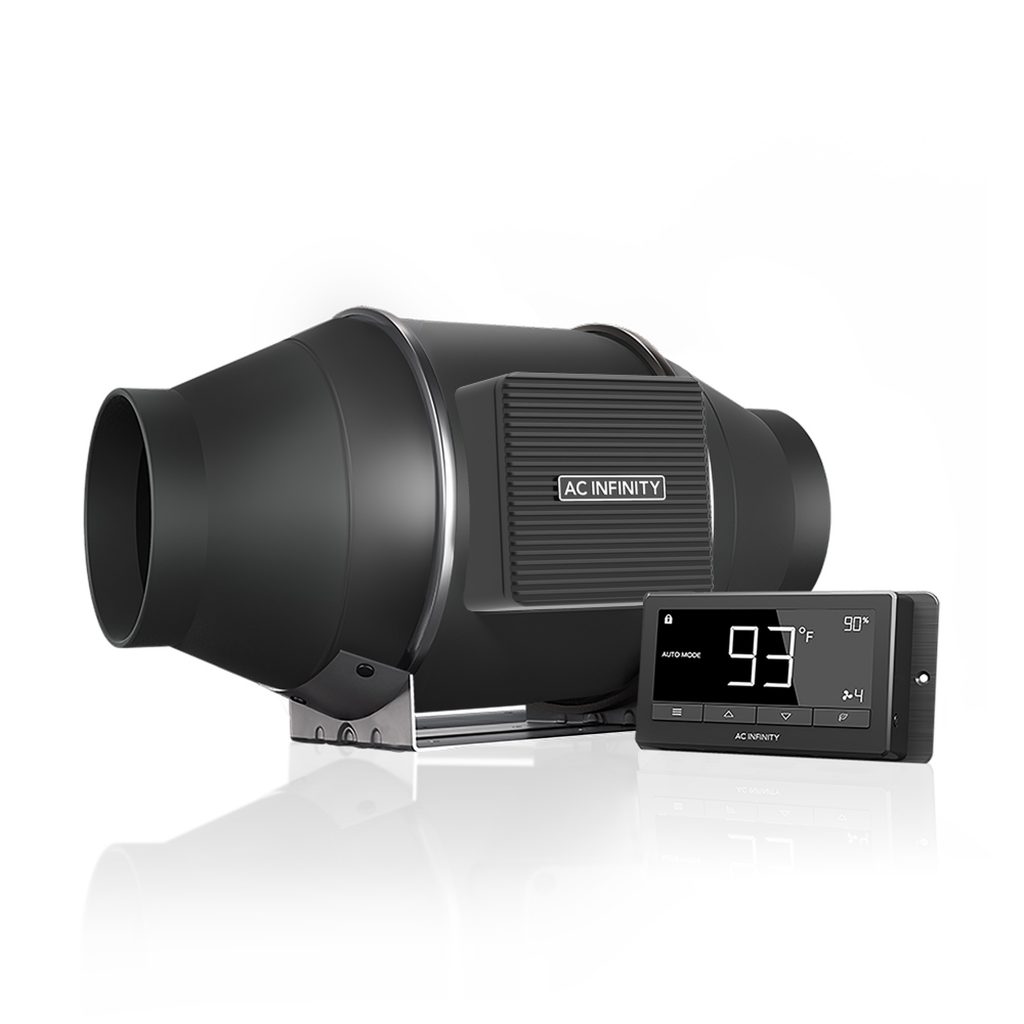

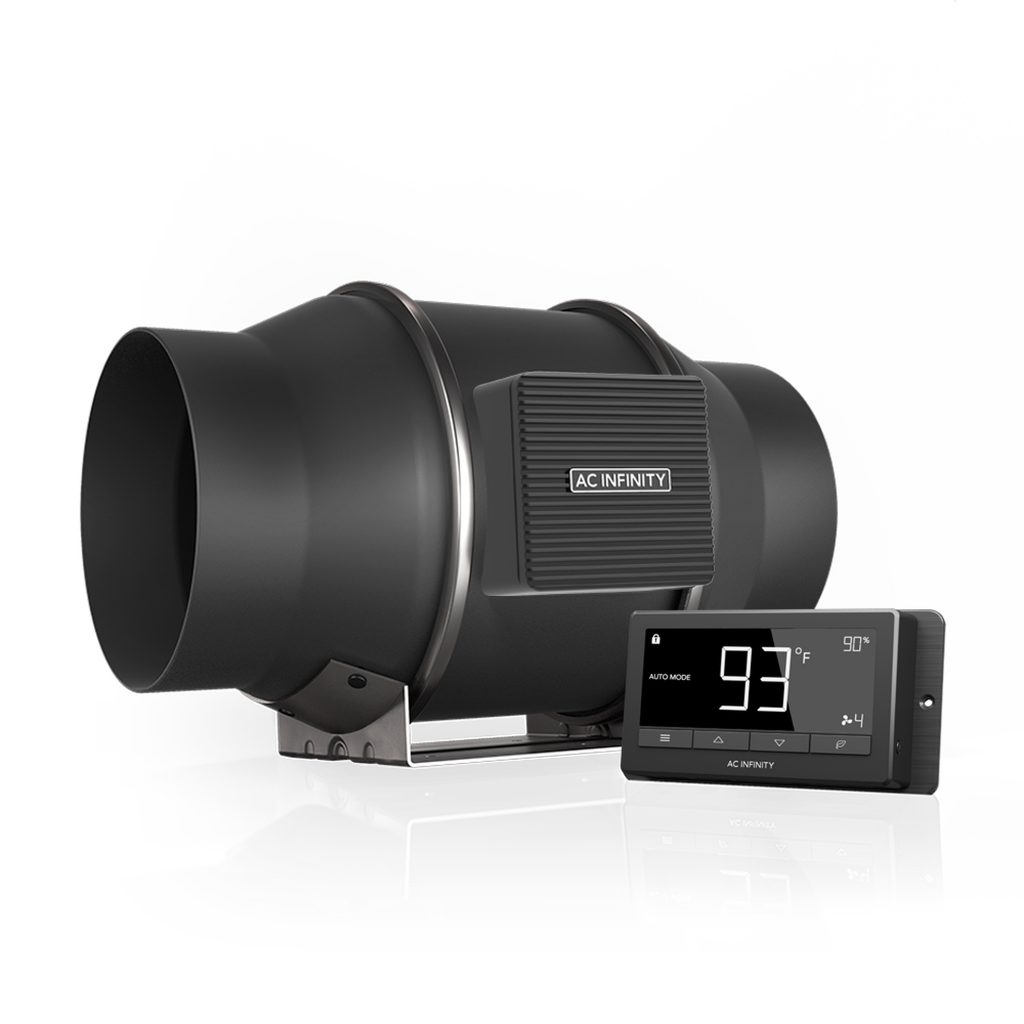

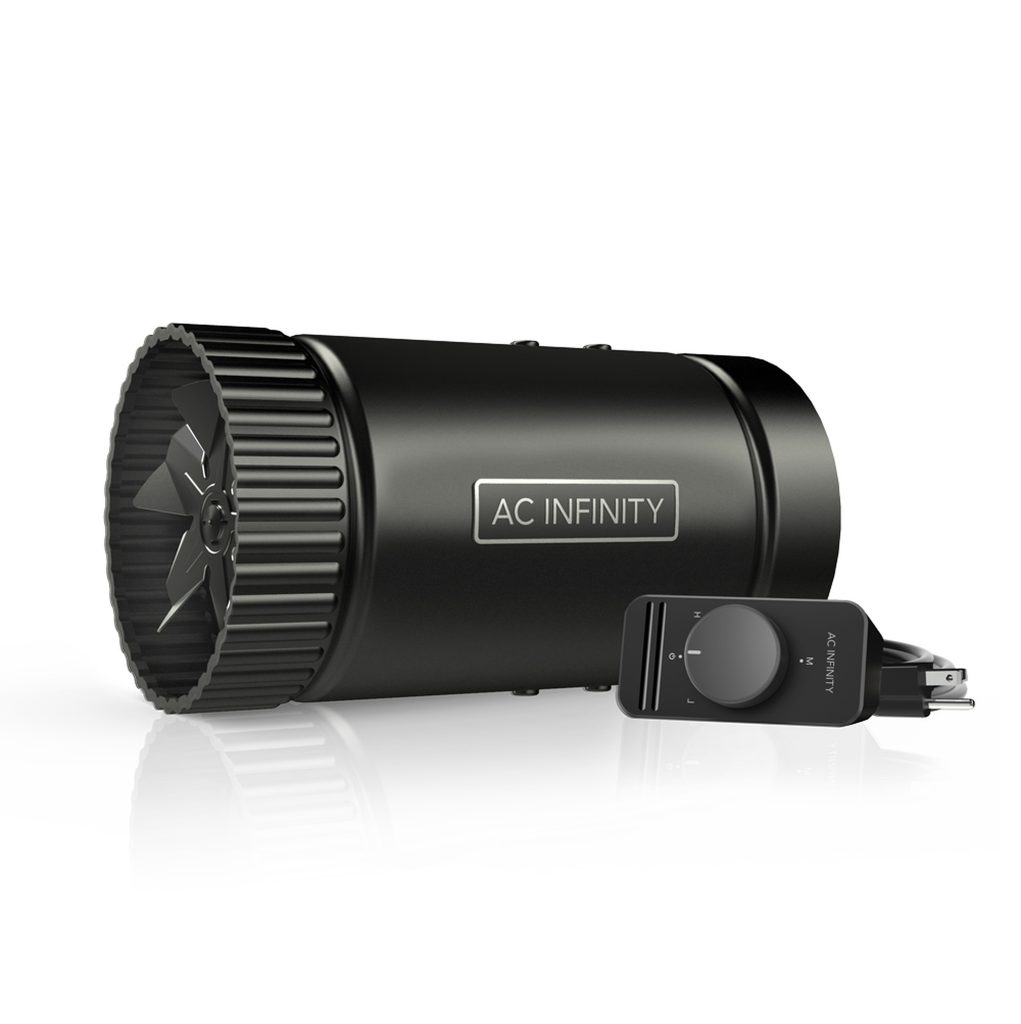
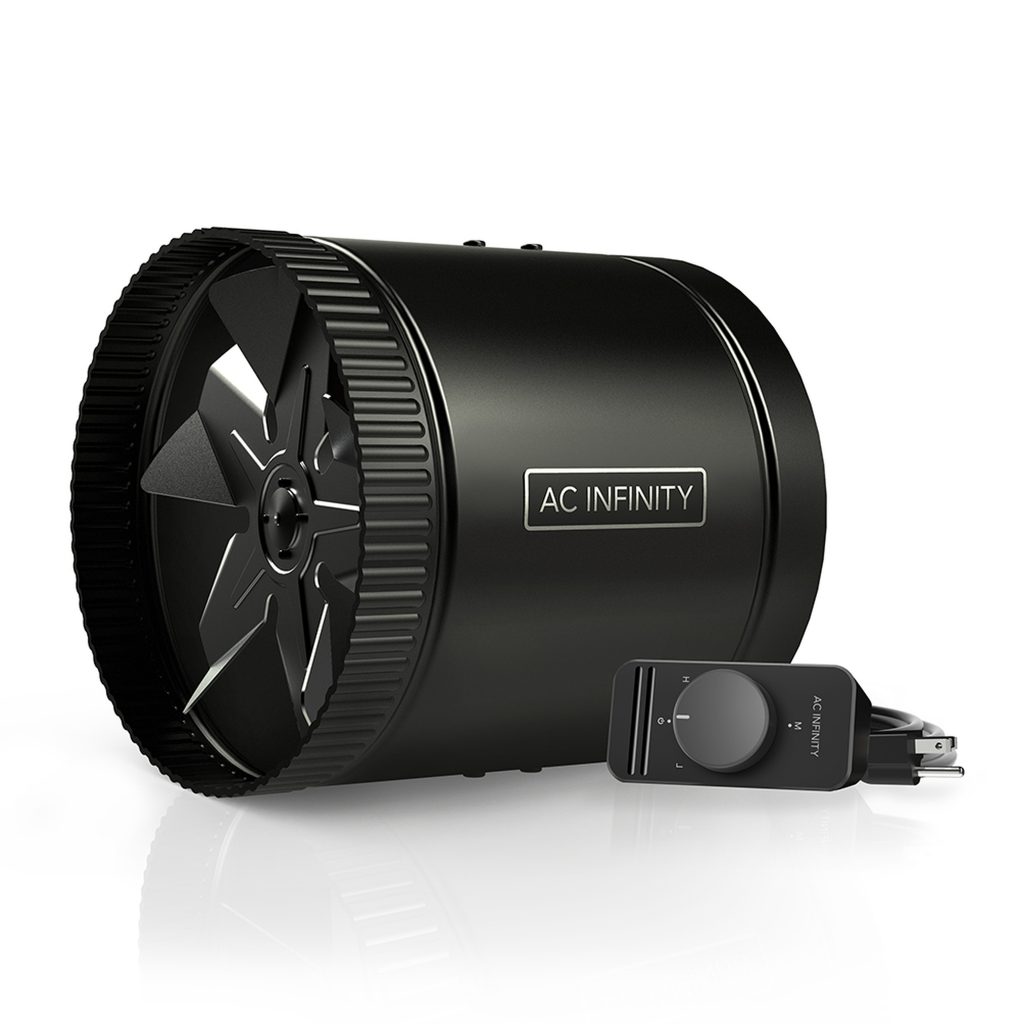

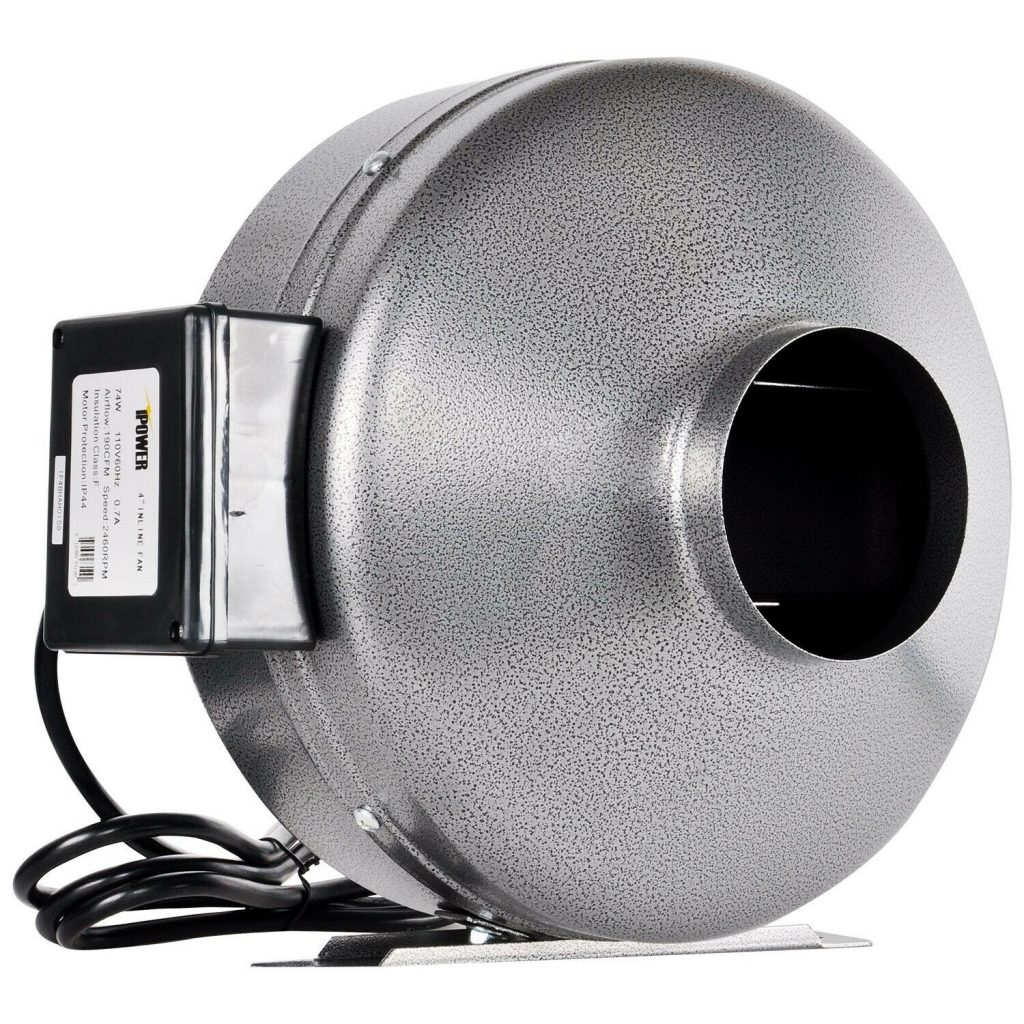
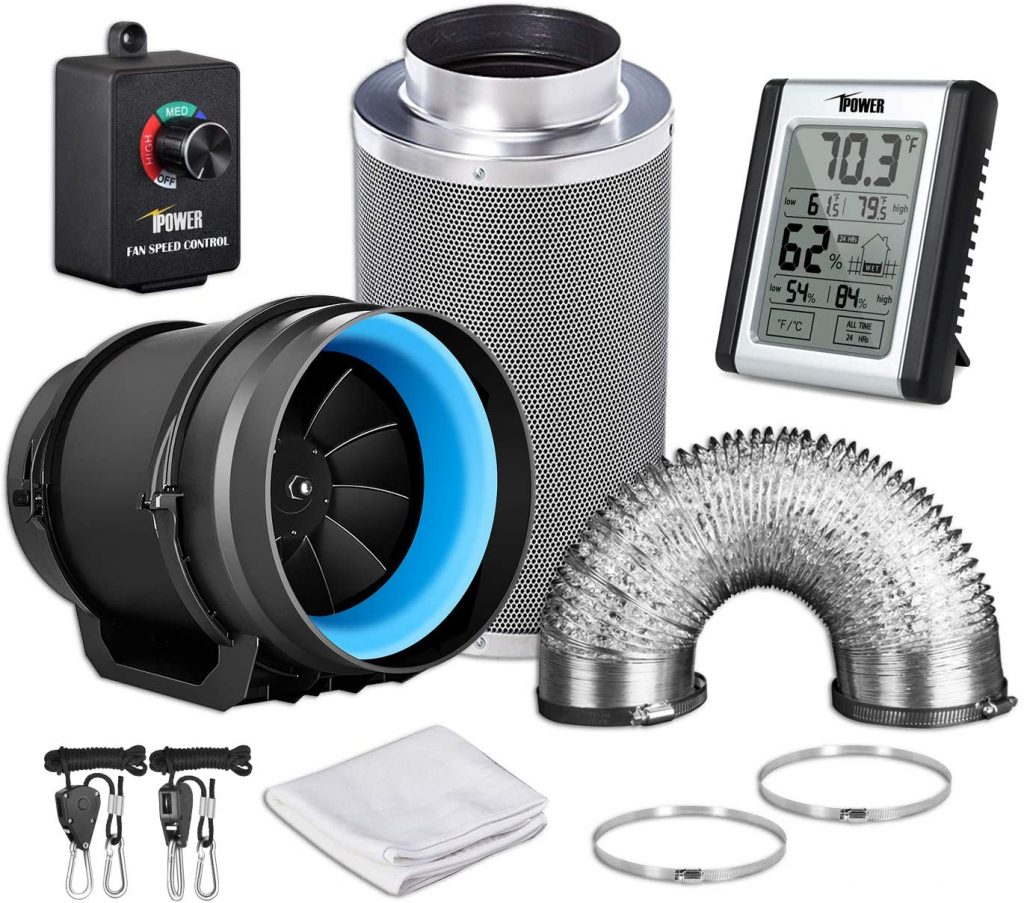


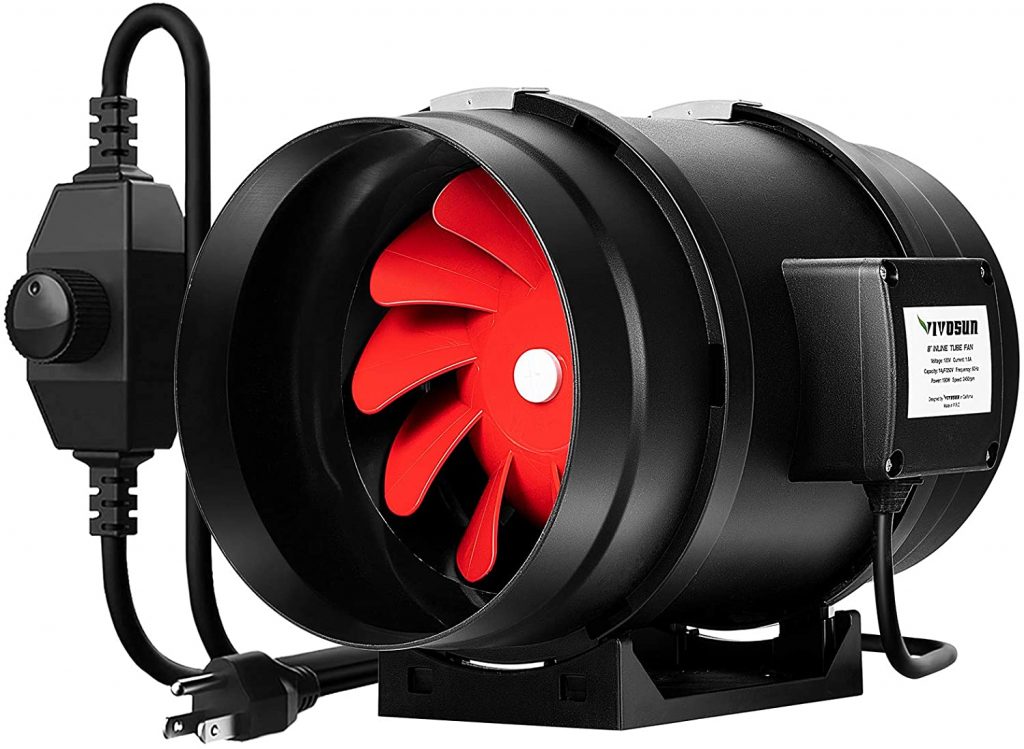
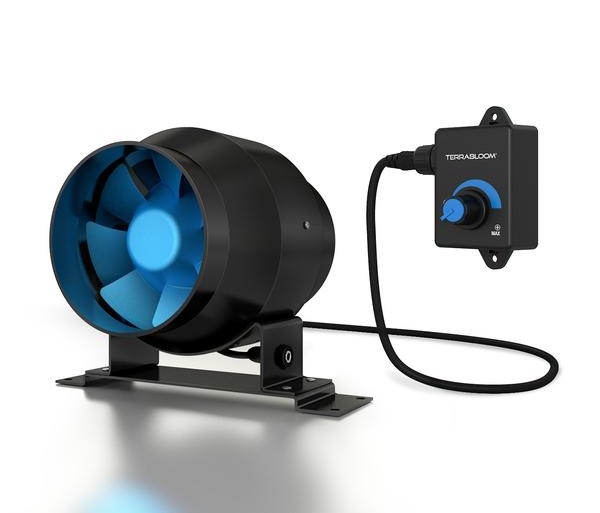
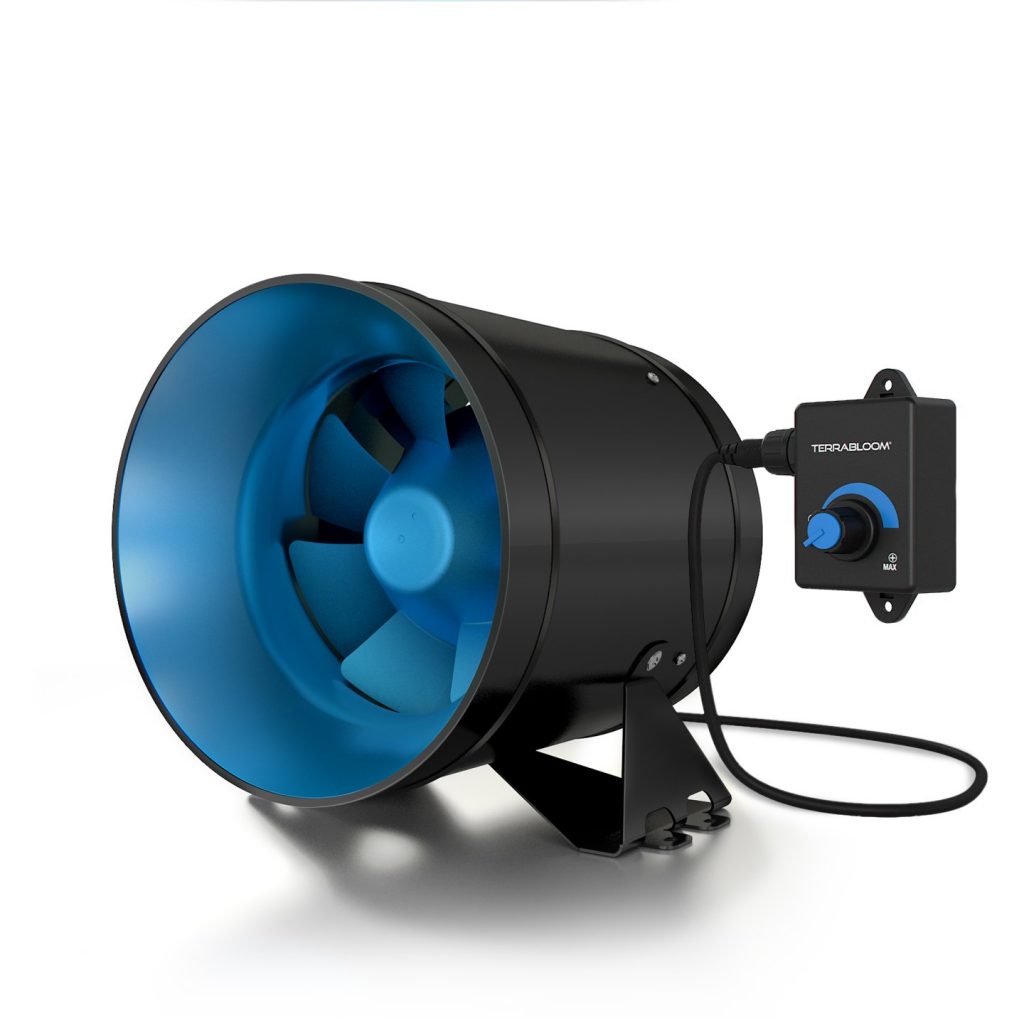
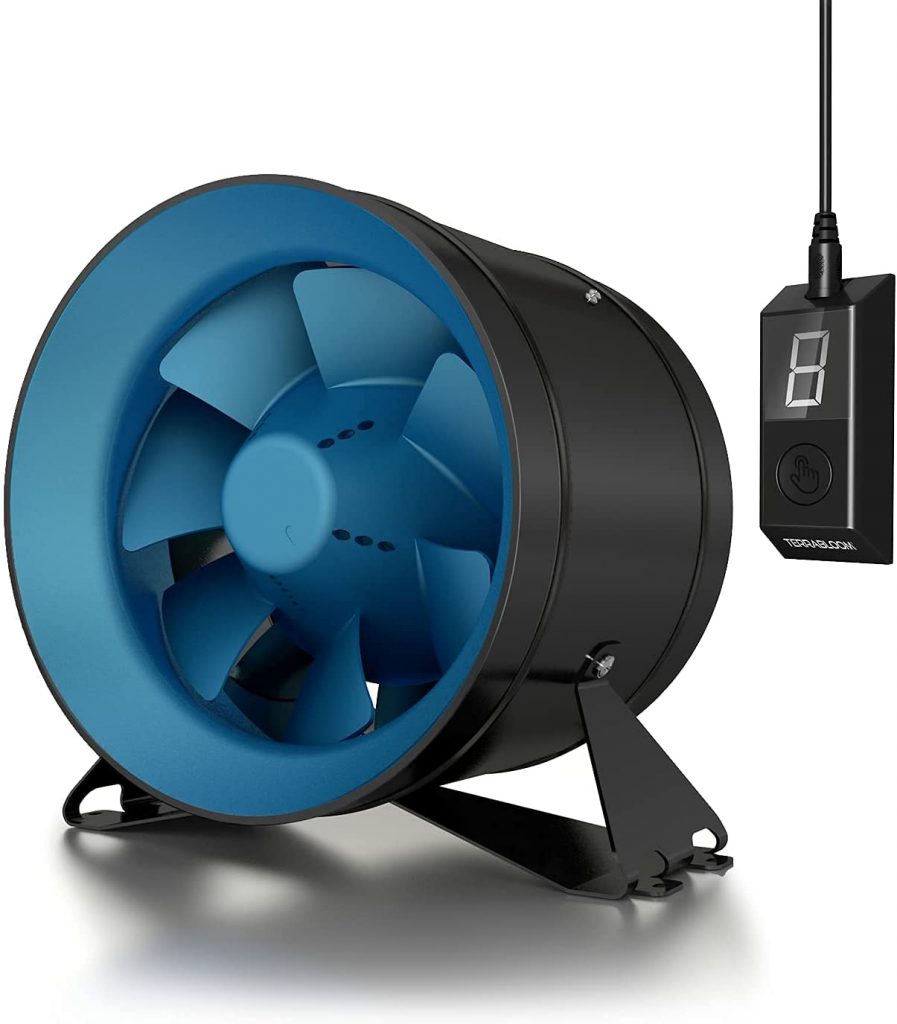
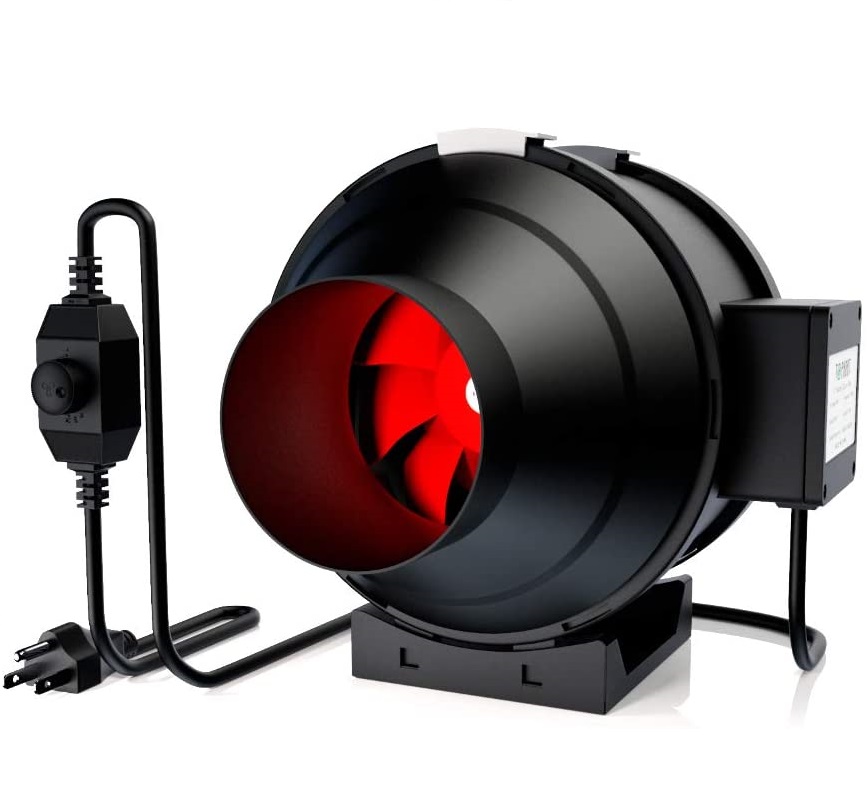

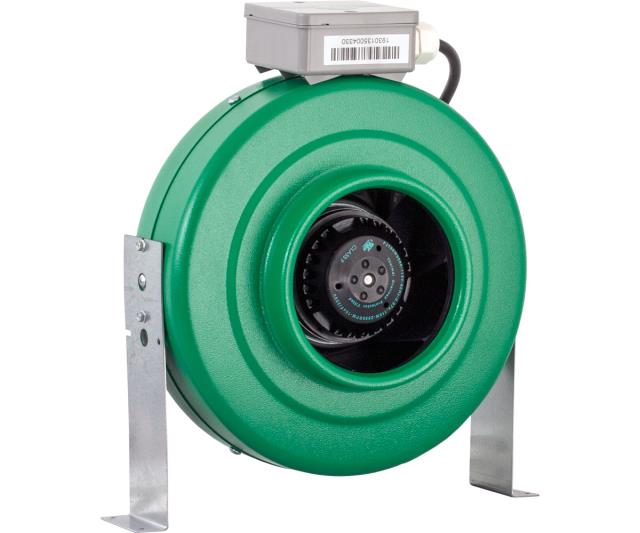
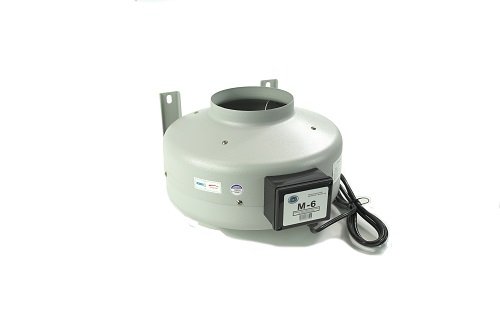
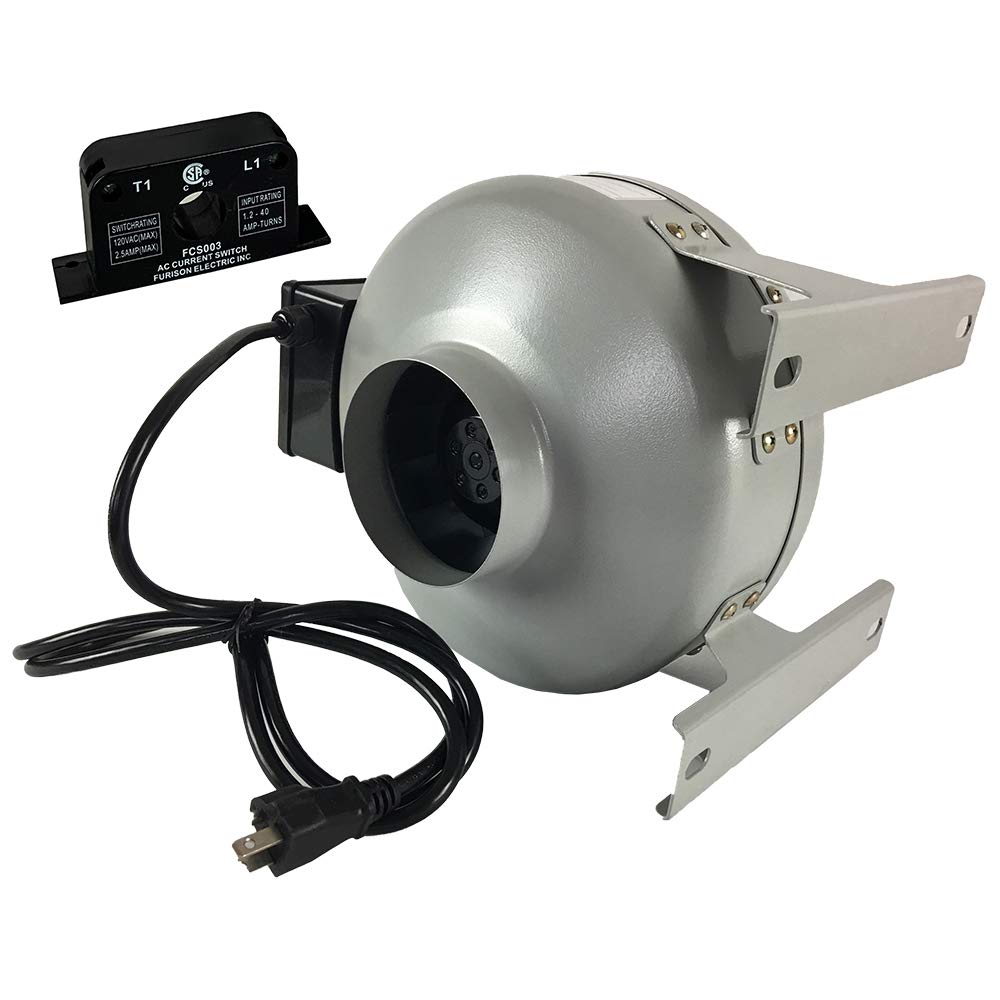
Leave a Reply
You must be logged in to post a comment.